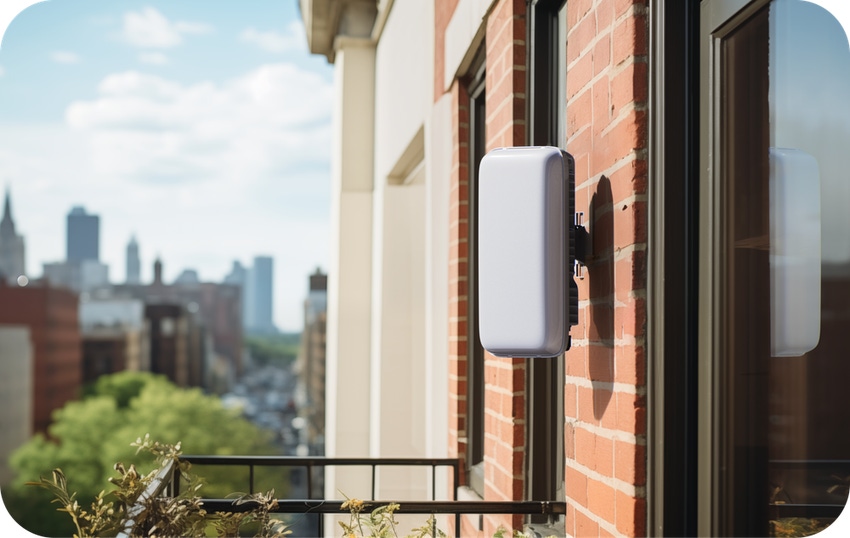Helium Mobile's subscriber count could exceed 8,000
Based on one count of NFTs related to Helium Mobile's network-mapping system, it appears the company may count around 8,000 subscribers after launching unlimited mobile services for $20 per month earlier in December.

Helium Mobile launched unlimited mobile services nationwide for $20 per month a few weeks ago. Now, some calculations estimate the mobile virtual network operator (MVNO) has around 8,000 subscribers.
However, those calculations stem from the company's network-mapping system, which uses publicly available data. Helium officials told Light Reading that not every subscriber chooses to implement the company's mapping technology, "and therefore the [8,000] number is not reflective of total subscribers." But they declined to provide concrete customer numbers for the service.
After this article was published, a Helium Mobile executive said on social media that the company now counts "well over" 12,500 subscribers.
Helium Mobile is pioneering an innovative decentralized wireless (DeWi) business model. The company, which provides services under an MVNO deal with T-Mobile, promises to provide rewards of cryptocurrency to subscribers who agree to deploy and operate mobile hotspots.
The model aims to shift the costs of building wireless networks from the network operator to, well, just about anyone willing to make an investment. Several other companies – Really, World Mobile, Xnet, Karrier One and others – are in the early stages of developing similar models that promise rewards of cryptocurrency or in some cases cash.
Growing subscribers
"New [Helium Mobile] subscribers, as part of onboarding flow, are given the option to opt into earning 'mapping rewards' for sharing their phone's session connection data with Helium," explained Salvador Gala in an email to Light Reading. Gala is the co-founder of Escape Velocity Ventures, which invests into the DeWi space. "If the user agrees, an NFT is minted into their Helium (Solana) wallet. Holders of this NFT then earn a proportional share of $MOBILE mapping rewards (currently 20% of all $MOBILE rewards)," he added.
Explaining the DeWi lingo and cryptocurrency jargon, Gala said Helium Mobile subscribers can receive cryptocurrency payments ($MOBILE rewards) if they agree to put an NFT (non-fungible token, which supports location monitoring) onto their phone. Helium Mobile phones include access to a Helium cryptocurrency wallet, which uses the Solana blockchain platform.
By agreeing to add the NFT, customers can then help locate places where Helium users congregate. That information is valuable to Helium Mobile because the company can encourage users to deploy hotspots in those areas as a way to reduce the company's MVNO network-usage payments to T-Mobile.
Gala pointed to several sites on a crypto-tracking website called Dune that record information about the number of NFTs issued by Helium Mobile. One site counts around 8,000 recipients of Helium Mobile's NFT, and Gala said he believes that to be a relatively accurate customer number for the MVNO. He said another count – totaling around 34,000 – "includes people who downloaded the app and opted into mapping, but may not have subscribed to a cell phone plan yet."
Gala also noted that it most of Helium Mobile's customers appear to have signed up when Helium Mobile was offering $5 per month services in Miami, prior to its nationwide launch of $20 per month services earlier this month.
Model has skeptics
Helium Mobile pioneered the DeWi model, using cryptocurrency rewards to build a massive Internet of Things (IoT) network using LoRa technology. Now, it's expanding the concept to cellphones by encouraging users to build Wi-Fi access points or cellular small cell transmissions sites in the unlicensed 3.5GHz CBRS band.
Helium Mobile officials tout around 10,000 such sites. Its customers use T-Mobile's network outside Helium Mobile's DeWi coverage areas.
But some analysts are skeptical about the new business model.
"I'm very doubtful how much real-world traffic will go via these Wi-Fi APs [access points] or small cells," analyst Dean Bubley of Disruptive Analysis wrote on LinkedIn. "I can't believe mobility is great if you're driving down a street, switching from MVNO to Wi-Fi, one Wi-Fi AP to the next, or between CBRS cells, even if they're overlapping. They use 3rd party broadband backhaul, maybe against the T's and C's [terms and conditions]. Latency is added by 'tromboning.' And QoS [quality of service] and security are questionable."
Indeed, some Helium Mobile officials have acknowledged the possibility of users activating large numbers of Helium Mobile phones simply to earn cryptocurrency rewards for mapping.
But Helium Mobile officials have also pointed to increased offloading among customers.
DeWi competitors
Among the other companies with a business model similar to Helium Mobile's, World Mobile touts eSIM-based mobile service plans starting at $8.50 per month. And the company hopes to supplement that with AirNode balloons in rural areas leveraging the DeWi model. World Mobile has already invested in spectrum in parts of the US.
And officials from startup Really told FierceWireless in September the company hoped to launch its own T-Mobile-powered MVNO by the end of 2023. But Really's website now touts a $200 per month "elite phone service" launching in early 2024.
Another player, Xnet, so far has hinted at its ambitions to provide DeWi-based roaming services to big wireless network operators but hasn't announced a deal yet. Xnet officials recently touted DeWi coverage in Houston. That dovetails with a recent announcement from DeWi network construction company LongFi Solutions and CBRS equipment supplier BLiNQ Networks of "the largest contiguous CBRS networks in the US" in central Houston.
About the Author(s)
You May Also Like












